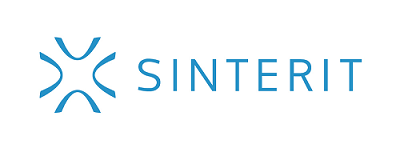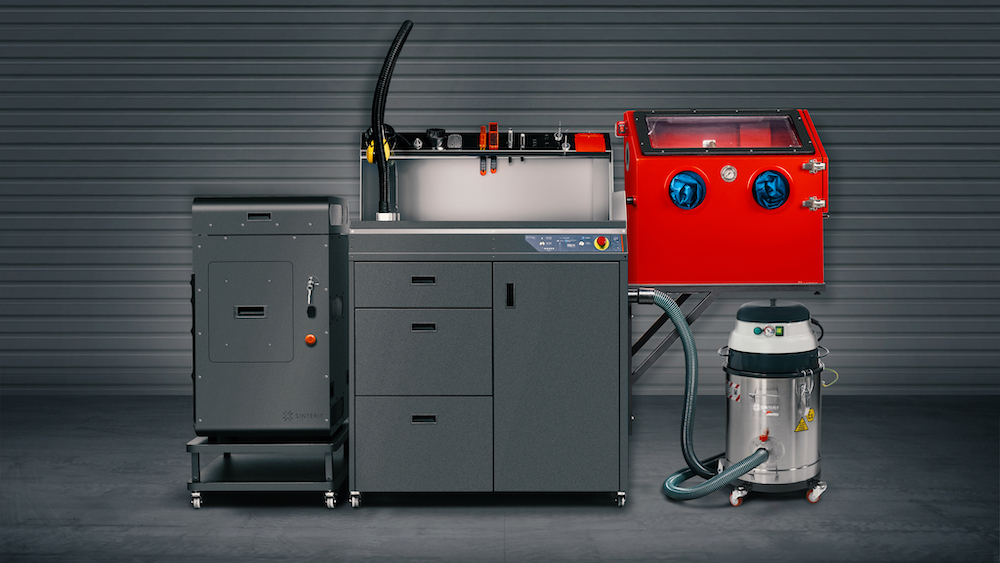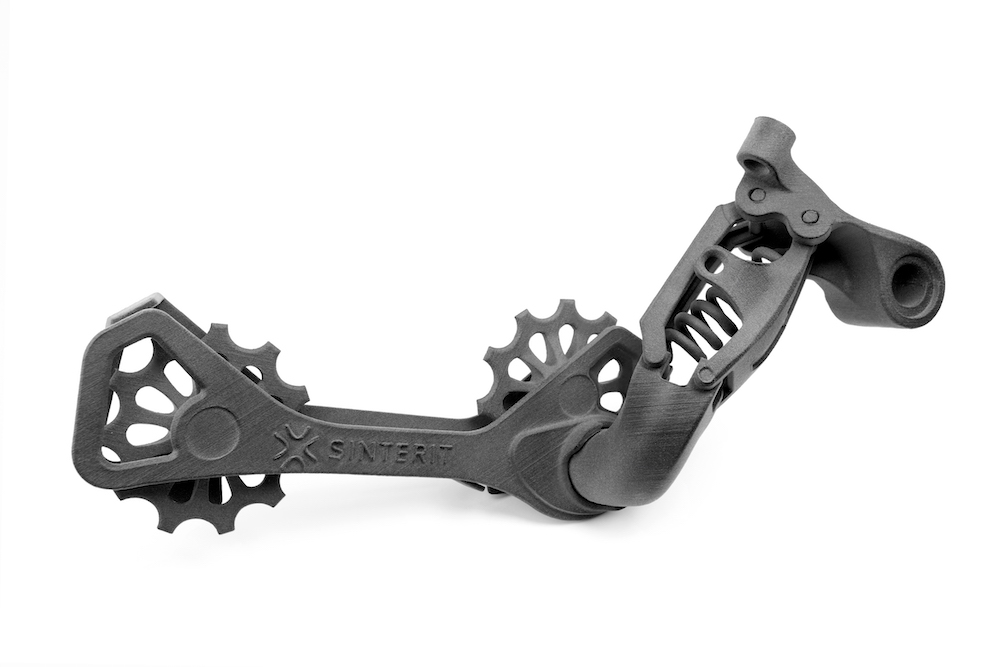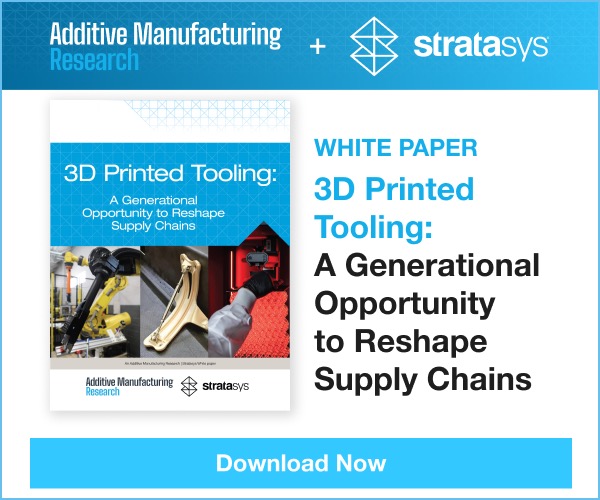
Expectations of 3D printers are growing. Especially in the field of prototyping. To do it right, you need not only a reliable 3D printer but a wide range of materials to print from. It is important to consider while choosing your device.
SLS 3D printers are known for their impressive accuracy, readiness to print complicated parts, with inner geometries and without supporting structures. But it is not all. SLS was always associated with a wide range of materials. In 2014 this expensive and only available to a handful of users technology was brought to the mass market when the SLS patent expired and a few producers decided to develop smaller, benchtop SLS 3D printers. While the price was more than ten times lower compared to industrial machines, the number of available powders was also modest. Why was that?
Different laser types within the SLS branch
Developing a small SLS 3D printer is way more complicated than just scaling down an industrial one. For example, CO2 lasers used in big machines are long, usually over a meter in length. It is one of the reasons that transferring them to smaller devices is pointless. Especially that it is also bulky and heavy, so a system of mirrors is needed to deliver a laser beam where it should be. This is why in small and medium-sized SLS 3D printers infrared laser diode is used. With shorter wavelength, those lasers are as precise as CO2 models, but can’t cope with white materials, mostly known from large SLS 3D printers. Is it a problem?
“A few years ago, when we developed our first SLS 3D printer, Sinterit Lisa, customers were constantly asking if they can use a white PA12 powder. Black and gray printouts were a novelty at that time so for someone who was used to SLS 3D printing it could be weird,” says Konrad Głowacki, Sinterit’s co-founder and Chief Business Development Officer.
PA12 Smooth, the king of SLS powders.
The first available material, and until now mostly used with SLS 3D printers was PA12. It is quite stiff and has excellent quality of print surface and details, thus it is used mostly for detailed printouts, complex spatial shapes, as well as structural or mechanical elements. Most of the functional prototypes or final parts are made with PA12. Black, or rather dark grey color has some advantages. It doesn’t change the color as time goes on, while white printouts from CO2 laser equipped printers to become yellowish due to UV, The blackish color of PA12 used on SLS 3D printers is achieved by adding a very small amount of an absorber, that doesn’t change the properties of a printout. The differences found in laboratory tests are within the margin of statistical error.
“As years go by, we receive fewer questions about the white color, but the demand for a wide range of different types of materials is rising significantly,” adds Konrad Głowacki.
How many types of powders you could have on a SLS 3D printer?
The use of a diode laser and the smaller size of the printer itself do not limit the material base. .. You can use materials from diverse groups such as PA, TPU, or TPE differ, among others melting temperature. The construction of the SLS 3D printer needs to maintain the best conditions during the printing process, but also make it easy to clean the printer before changing the powder type. Especially when you need to change the powder from one with a lower melting point (like TPE) to the higher (PA).
“To produce an SLS 3D printer which is can work with various materials you need to develop sometimes hundreds of iterations,” says Michal Grzymala-Moszczynski, Operations Manager and co-founder of Sinterit.
“A small change in one area may result in changing other parameters, which will finally affect the printing process. This is why our R&D department works simultaneously on mechanics, hardware, and software. Having over a thousand of working Lisa and Lisa PRO printers around the world proves that our idea works,” adds Grzymala-Moszczynski.
A material that suits my needs
Expectations for SLS prints are not only dimensional accuracy and durability, but also specific needs like insulation, electric conductivity, flexibility, and tightness.
As the most common application in SLS is prototyping – the demand for the diversified material portfolio is something even more significant than the need for speed.
Let’s take a look at the materials on the example of the Sinterit offer (the most available materials for printing on SLS)
PA11 for high resistance against impacts
Besides the most popular PA12 Smooth, users are especially fond of PA11 Onyx, which is a polyamide powder (nylon) with superior thermal resistance, stable to light, UV, and weather. It is useful for jigs, fixtures, and tool elements. Users decide to use PA11 Onyx when they prototype covers, housings, enclosures, as well as snap-fit designs. This material needs an anaerobic environment. Sinterit uses nitrogen which could be applied to Lisa PRO SLS 3D printer.
PA11 ESD – a material with heat resistance and ESD functionality
This version of PA11 is one of the newest powers developed for the Sinterit Lisa PRO printer. For companies prototyping electronic devices, it is the first choice thanks to the powder parameters. As an ESD safe material with better thermal properties, it could be used for electronic casings, test fixtures for electronics, or the assembly of electronic components. If the printed part needs to be used in an explosive atmosphere, this material is ideal for it.
PA12
Due to its versatility and good mechanical properties, it is the most popular material in SLS.
The key parameter, apart from durability, is the cost of the material. In SLS, the purchase cost itself is not so significant. The low value of the refresh ratio means low costs of subsequent prints. The market standard is 70-50%, but Sinterit develops a material with the lowest ratio of26%.
Flexa Grey, an introduction to TPU
Sometimes high elasticity is a must. Prototypes or final parts from TPU are used when flexible prints with increased extensibility are needed. As stiff, rigid elements can be easily produced with PA materials, TPU is irreplaceable when it comes to standard rubber items, shock and vibration absorbers, or protectors.
Flexa Bright – the only offwhite material available for SLS
Dying SLS printed parts may not be so popular, but prints made from Flexa Bright can be dyed to other colors. Pre-surgery and training printouts in the medical industry or mock-ups and models that need elastic characteristics are perfect for this unique TPU material.
As soft as it could be – Flexa Soft
If Flexa Bright is considered as a soft material then Flexa Soft is an absolute champion. Thanks to a low Shore-A (45/56 – depending on printer settings) it could be used in design, art, and simulation of really soft materials. Sinterit’s experience shows that it is most commonly used for gaskets, medical models, sensory toys, or clothing parts.
Waterproof and airproof readiness – TPE
Almost all materials available for SLS 3D printers are characterized by porosity, which could disqualify prototypes that need to be water or airtight. With TPE it is possible to print functional prototypes such as pumps, bellows, gaskets, and other elastic solutions dedicated to working in difficult conditions. After sealer covering it becomes watertight & airtight.
For years the availability of SLS technology was limited by the prices of industrial solutions.
Thanks to the first small printers, the market for materials for SLS began to grow intensively. Today there are hundreds of developing programs on technical universities and research centers developing new materials for engineering, manufacturing, and medical applications.
Today, the largest range of materials (7 different) is offered by Sinterit. They also declare the development of new ones in a short time. This is a big advantage over other systems limited to one or two materials.
Subscribe to Our Email Newsletter
Stay up-to-date on all the latest news from the 3D printing industry and receive information and offers from third party vendors.
Print Services
Upload your 3D Models and get them printed quickly and efficiently.
You May Also Like
SEOULTECH Researchers Make Auxetic 3D Printed Pressure Sensors for Wearables
In a recent paper, Seoul National University of Science and Technology (SEOULTECH) researchers look at “Additively Manufactured 3D Auxetic Metamaterials for Structurally Guided Capacitive and Resistive Tactile Sensing.” Mingyu Kang, Hong-Gap...
3D Printing News Briefs, September 17, 2025: IDEX Printer, NiTi Scaffolds, Cooking Oil, & More
In today’s 3D Printing News Briefs, Raise3D announced the launch of a new printer at FABTECH 2025, and EOS and AM Solutions share about their integrated post-processing ecosystem, first introduced...
ICAM 2025: A Decade of Driving Additive and Advanced Manufacturing
When ASTM International first convened a technical workshop on additive manufacturing (AM) in 2016, the industry was still laying its foundation. The conversations centered on fatigue and fracture behaviors, and...
ETH Zurich Develops Rotary LPBF System that Processes Multiple Metals
ETH Zurich researchers have come up with a rotary LPBF system, the RAPTURE, that can process multiple metal materials simultaneously. In their published paper, they explain that the system may...


































